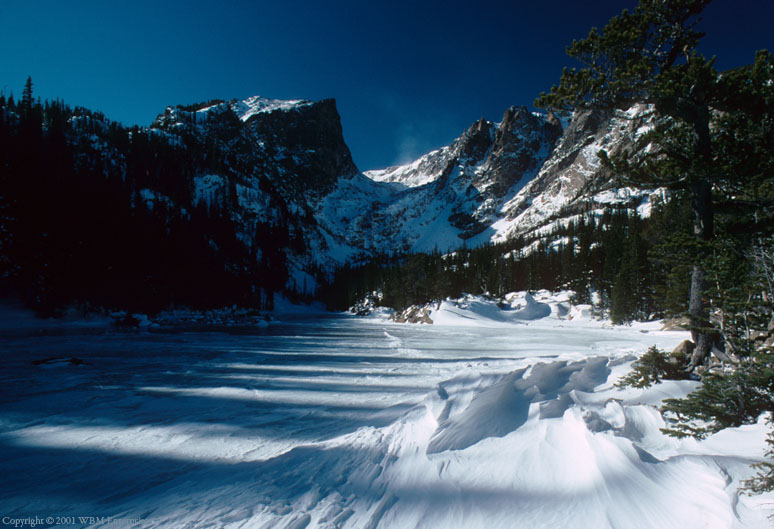![]()
![]()
|
*As photo of the month for January, we selected a shot of Dream Lake (9,880 feet) and Hallet Peak
(12,713 feet), in the Rocky Mountains National Park of Colorado. This spot is well-known and often visited in the summer and fall, but presents a quite different appearance in the early winter when the lake is frozen and very nearly covered with snow. In the scene shown above, very strong wind has sculpted the snow in the foreground, and partly cleared the surface of the lake, which is patterned with the sharp peaked early morning shadows of spruce and fir. Our strongest memories of this location, apart from the rather stark beauty, was of strong wind and cold, cold, cold. We remember the wind chill as being reported in the -60 degrees Fahrenheit range. Winter photography can be rewarding, we love to be out with the cameras in such conditions, but careful attention to dress is a must. In the very cold conditions of high mountain winters, frostbite is a real danger. The relative inactivity of setting up cameras and tripods, and waiting for just the desired light, requires much warmer dress than that for skiing or snowshoeing. A rucksack with some additional layers of warm clothing, and warm, open-fingered gloves inside well-insulated mittens can make the wait a lot more agreeable, manipulation of the camera easier, and perhaps the photos closer to what you would like them to be. Also, in very cold conditions, we have heard reports that film may sometimes fail to advance properly. This may be because the film becomes brittle, or because of some combination of conditions. In any case, it will pay to keep your cameras relatively warm. This is especially important for cameras that rely heavily on battery power. We keep ours inside our outer layer of down parka, and wrapped in a light waterproof covering (a baggie, for example), and always carry warm backup batteries. For helpful and detailed tips on cold weather photography, we recommend you visit the site New York Institute of Photography - How Should I Handle My Camera in Cold Weather. |
